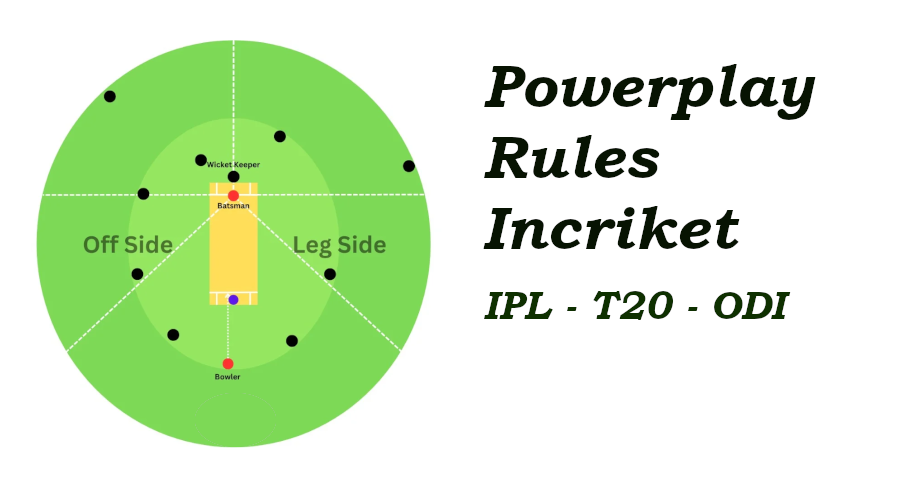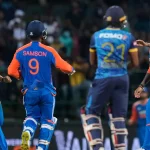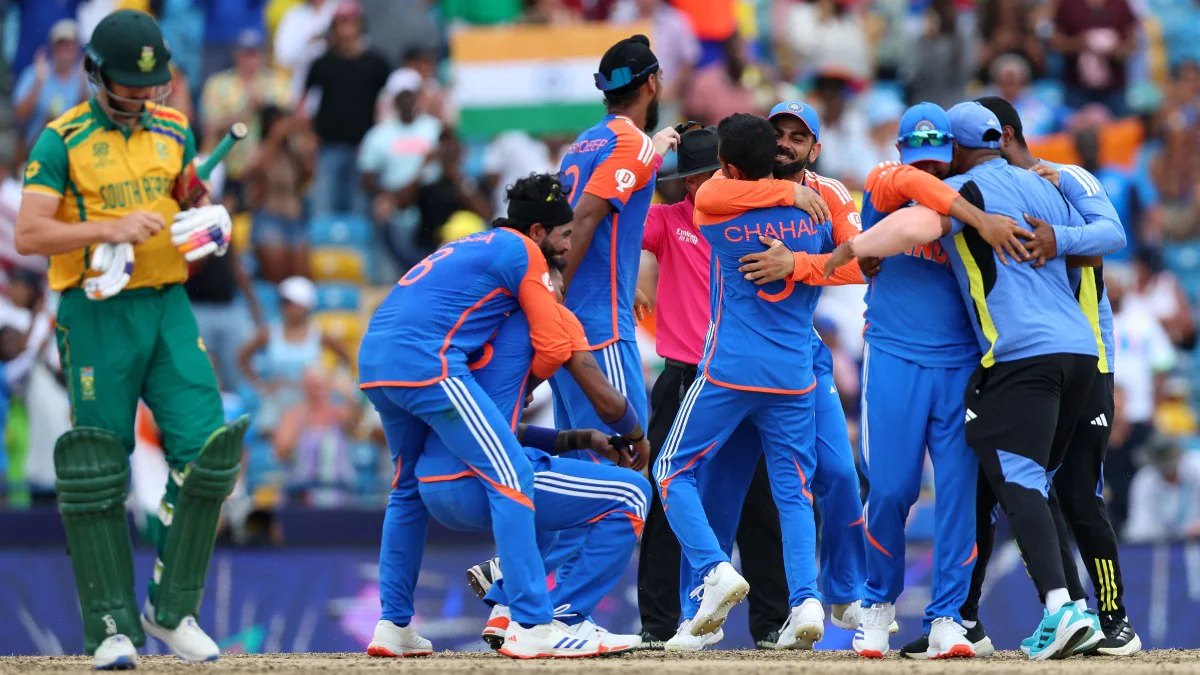Powerplay in cricket is not a very new term but if you don’t know much about it then today you are at the right place. Powerplay is a very important part of the cricket game where the batsmen are blessed with a chance to score runs quickly for their team. ICC keeps changing the rules of powerplay but in this article we will discuss the current powerplay rules in ODI along with powerplay rules in T20. We will also learn some tips to play efficiently in powerplay so you can score more for your team or if bowling or fielding, then restrict the opponent to a low total. So, are you excited? If yes, then let’s get started.
What Is A Powerplay In Cricket?
Powerplay in cricket is a special time when the batting team can score more runs. It’s like a bonus period. The powerplay rules in ODI and T20 are different, but they both aim to make the game more exciting. In the old days, cricket didn’t have powerplay. It came about to make matches more fun to watch.
At first, there was just one type of powerplay but now we have different kinds of powerplay in cricket depending on the game format. The main idea is to limit where fielders can stand which gives batters more chances to hit big shots. Powerplay in cricket has changed how teams play and plan their game. It’s become a key part of cricket strategy, especially in shorter formats T20.
Current Powerplay Rules in Different Formats
Let’s talk about powerplay rules in different types of cricket. In ODIs, the innings are divided into three parts (1 to 10 overs, 11 to 40 overs, and 41 to 50 overs). The first 10 overs are always beneficial for batsmen because only two fielders are allowed outside the 30-yard circle. After 10 overs, a total of 4 fielders are allowed outside the 30-yard circle whereas during the last 10 overs, 5 players are allowed which makes it tough for batsmen to score runs.
The powerplay rules in T20 are very simple where only the first 6 overs are powerplay. During these times, only two fielders can be outside the 30-yard circle. This means more gaps for batters to hit into.
Test cricket doesn’t have official powerplay rules. But captains can still use similar tactics. Each format’s rules aim to balance batting and bowling. They make the game more exciting for fans.
Mandatory Powerplay
The mandatory powerplay is the first part of the powerplay in cricket. It happens at the start of an innings. In ODIs, it’s the first 10 overs. For T20s, it’s the first 6 overs. During this time, only two fielders can be outside the 30-yard circle and this creates lots of gaps in the field.

Batters try to take advantage of this by playing more aggressively. They look for boundaries and quick runs. Bowlers have a tough job during this time and they need to be extra careful.
Captains usually use their best bowlers here. The mandatory powerplay can set the tone for the whole innings. Teams that do well in this period often end up with a good score.
Batting Powerplay (in ODIs)
Batting powerplay rules keep changing in ODIs. Previously the rules were as follows: after the first 10 overs, there’s another 5-over powerplay. The batting team can choose when to take it but it must be taken before the 40th over. During this time, only three fielders can be outside the 30-yard circle. This is a chance for batters to score quickly again.
But it was tricky to decide when to use it. If you took it too early, you might lose wickets. If you waited too long, you might not have strong batters left. Good teams used to plan for this powerplay. However the rules are changed now, and we have already discussed the new rules. Let’s move to the next section where we will learn some bowling strategies.
Bowling Strategies During Powerplay
Bowling during powerplay is tough. Because there are only two fielders on the boundary to stop runs, bowlers need smart plans. Fast bowlers often try to bowl straight and full to hit the stumps or get lbw wickets. Some use bouncers to surprise batters.
Spin bowlers have the most trickiest job in powerplay. Many captains use spinners to change the pace of the game as they are the one who can slow down scoring. They mix up their speeds and use the crease well.
All bowlers try to avoid giving easy hits. They change their pace and length often. The key is not to be predictable. Good power play bowling can win matches. It’s a real test of a bowler’s skills.
Fielding Tactics in Powerplay Overs
Fielding in powerplay overs is a big challenge. There are fewer fielders allowed outside the circle. So, every position is crucial. Captains need to be smart about where they put their fielders. They often keep fielders close to save singles. But they also need catchers for when batters take risks.
The most common places for fielders are slips, cover, mid-off, and mid-on. These spots can both save runs and catch balls. Good fielders are really important during powerplay. They need to be quick and have strong arms.
Fielding teams try to put pressure on batters. They want to force mistakes. Smart field placement can make a big difference in limiting runs during powerplay.
Impact of Powerplay on Match Outcomes
Powerplay has a big effect on how cricket matches turn out. Teams that do well in powerplay often win the game. In ODIs and T20s, a good powerplay can set up a big score. Or, if bowling, it can put the other team under pressure early. Statistics show that runs scored in powerplay are really important.
Teams that score more in powerplay usually end up with higher totals. For bowlers, taking wickets in powerplay can slow down the scoring for the whole innings. Many games are won or lost based on what happens in these overs. That’s why teams spend so much time planning for powerplay.
It’s a key part of modern cricket strategy. Understanding power play can help you see why matches unfold the way they do.
Famous Powerplay Performances in Cricket History
Some of the most exciting cricket moments have happened during powerplay. Remember when Sachin Tendulkar smashed 98 runs against Pakistan in 2003? He scored most of those in the powerplay overs in ODI. Or think about Brendon McCullum’s quick 50 in just 18 balls during a T20 World Cup. These innings changed the matches completely.
It’s not just about batting, though. Bowlers have had great powerplays too. Like when Mitchell Starc took two wickets in the first over against New Zealand in a World Cup final. These performances show how important powerplay is. These are the times when players can become heroes.
Fans always get excited when powerplay starts because they know something big might happen. These famous powerplay moments are a big part of cricket history now.
Tips for Batsmen to Exploit Powerplay
Batters can really make the most of powerplay if they’re smart. First, they need to be ready to score from ball one. In powerplay, there are more gaps in the field. So, batters should look for these spaces. They don’t always need to hit big shots. Sometimes, just placing the ball well is enough. Running between wickets is super important too. Quick singles and twos add up fast.
Batters should talk to each other a lot during powerplay. They need to decide when to take risks. It’s good to target certain bowlers or areas of the field. But they also need to be careful not to lose wickets. The best batters mix attack with smart play. They know powerplay is a chance to get ahead in the game. But they also know they need to be there after powerplay ends.
Conclusion
Powerplay has changed cricket in a big way. It’s made games more exciting and given batters more chances to score. We’ve looked at powerplay rules in ODI and T20 cricket. As cricket keeps changing, powerplay might change too. But it’s sure to stay an important part of the game. Whether you’re a player or a fan, understanding power play helps you enjoy cricket more. It’s one of the things that makes modern cricket so thrilling to watch and play.
FAQs About Powerplay Rules In Cricket
Question 1: What are powerplay overs in ODI?
Answer: In ODIs, the first 10 overs are always powerplay. There’s also another 5-over powerplay later in the innings.
Question 2: How long is powerplay in T20?
Answer: In T20 cricket, powerplay is just the first 6 overs of each innings.
Question 3: Can batting powerplay be taken anytime?
Answer: In ODIs, the batting powerplay must be taken before the 40th over. T20s don’t have a separate batting powerplay.
Question 4: How many fielders can be outside the circle in powerplay?
Answer: Usually, only two fielders can be outside the 30-yard circle during powerplay.
Question 5: Do Test matches have powerplay?
Answer: No, Test cricket doesn’t have official powerplay rules.









